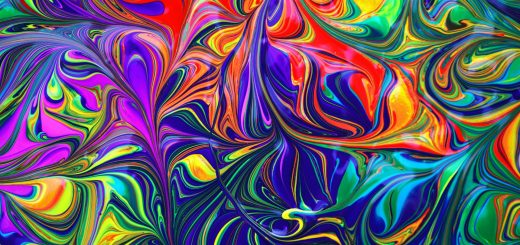Shiva: The Destroyer and Transformer in Hinduism

Looking for more amazing products? Check out our online store and explore our collection here! Happy shopping!
Before diving in, please note: This post is for informational purposes only. If you’d like to know more about how we approach topics, feel free to check out our friendly Disclaimer Page.
Hey there, amazing readers! 🖐️ Just a quick note: yes, we know there are a lot of ads here. Trust us, we get it—it’s not the prettiest look, but they help us keep this blog alive and kicking. Those pesky little ads cover the costs of all the behind-the-scenes magic, from hosting and tech stuff to creating content we hope you’ll love.
We’re committed to delivering quality posts, and your support (even just sticking around despite the ads) means everything to us. So, bear with us, and thanks for helping us keep the good vibes rolling. Now, on to the fun stuff! 😉
TRANSLATE BUTTON AT THE END OF THE ARTICLE
Shiva: The Destroyer and Transformer in Hinduism
Overview
Shiva, often referred to as Mahadeva or the Great God, is one of the most revered deities in Hinduism.
Known as the destroyer and transformer, Shiva occupies a prominent position within the Hindu pantheon and plays a crucial role in the cycle of creation, preservation, and dissolution.
This article aims to delve into the various aspects of Shiva’s identity, shedding light on his origins, mythology, symbolism, worship, and influence in contemporary Hindu culture.
Introduction to Shiva, the powerful deity of Hinduism
In Hinduism, Shiva is regarded as the supreme deity, embodying both masculine and feminine energies.
He is often depicted as a yogi, adorned with ash smeared on his body, wearing a crescent moon on his matted locks, and carrying a trident, known as the trishul.
As the destroyer and transformer, Shiva represents the forces of destruction, purging the universe of impurities and paving the way for new beginnings.
Origins and mythology surrounding Lord Shiva
The origins of Shiva can be traced back to the ancient Indus Valley Civilization, where seals and artifacts reveal the presence of a deity resembling Shiva.
In Hindu mythology, Shiva is believed to have manifested himself in various forms and assumed different roles.
According to the Puranas, Shiva is said to have originated from the supreme consciousness, known as Brahman, and is considered an eternal and timeless being.
Understanding Shiva’s role as the destroyer in Hindu cosmology
In Hindu cosmology, the universe undergoes cycles of creation and destruction.
Shiva, as the destroyer, is entrusted with the task of dissolving the universe at the end of each cycle, preparing it for the forthcoming creation.
This destruction is not perceived as negative but rather as a means of rejuvenation and renewal.
Shiva’s role as the destroyer is essential for maintaining balance and harmony in the cosmic order.
The significance of Shiva’s dance: Nataraja
One of the most iconic representations of Shiva is his Nataraja form, where he is depicted as the cosmic dancer.
This dance, known as the Tandava, symbolizes the eternal rhythm of creation, preservation, and destruction.
Shiva’s dance is believed to bring about the dissolution of the old and the birth of the new, signifying the continuous cycle of life and death.
It is also a visual representation of the interconnectedness of all things.
Shiva as the transformer: his role in creation and rebirth
While Shiva is commonly associated with destruction, he also possesses the power of creation and transformation.
He is often depicted as Ardhanarishvara, a form that combines both male and female attributes, representing the union of opposites and the harmony of creation.
Shiva’s transformative nature is evident in his ability to transcend dualities and bring about spiritual evolution and rebirth.
Exploring the various forms and manifestations of Lord Shiva
Lord Shiva is known to have many forms and appearances, each holding unique symbolism and significance.
Some of the popular forms of Shiva include Mahakala, the embodiment of time and death; Bhairava, the fierce and terrifying aspect of Shiva; and Dakshinamurti, the divine teacher who imparts spiritual wisdom.
These various forms highlight the multifaceted nature of Shiva and his ability to assume different roles based on the needs of creation.
Symbols and iconography associated with the deity Shiva
Shiva is often depicted with a wide array of symbols and iconography, each carrying profound meaning.
The trident, or trishul, represents his power to destroy, preserve, and create.
The snake coiled around his neck, known as Vasuki, symbolizes his control over desire and ego.
The crescent moon on his head signifies wisdom and spiritual enlightenment.
These symbols serve as reminders of Shiva’s divine attributes and guide devotees in their understanding and worship of the deity.
Worship and rituals dedicated to Shiva in Hindu religious practices
Devotees of Shiva engage in various forms of worship and rituals to seek his blessings and guidance.
The most common form of worship is through the practice of puja, where devotees offer flowers, incense, and prayers to the deity.
Explore the Path to Spirituality and Enlightenment – Start Here.
Many also observe fasts on special occasions such as Mahashivratri, the night of Shiva, to demonstrate their devotion.
Additionally, the chanting of sacred mantras, such as the "Om Namah Shivaya," is believed to invoke Shiva’s divine presence.
Devotees and followers of Lord Shiva: the Shaivites
Shaivism, one of the major sects within Hinduism, is dedicated to the worship of Lord Shiva.
Shaivites believe in the primacy of Shiva and consider him the ultimate reality, the one who grants liberation from the cycle of birth and death.
They engage in intense devotion, meditation, and contemplation to connect with the divine essence of Shiva and strive for spiritual enlightenment.
Shiva’s divine consort: the Goddess Parvati
Shiva is often depicted alongside his divine consort, Parvati, who is an embodiment of femininity, strength, and devotion.
Parvati is said to complement Shiva’s energy and plays an integral role in his cosmic dance of creation and destruction.
Together, they represent the union of masculine and feminine energies, emphasizing the importance of balance and harmony in all aspects of existence.
Shiva’s influence and presence in contemporary Hindu culture
Shiva continues to hold a significant presence in contemporary Hindu culture.
His image adorns temples and shrines across the Indian subcontinent, where devotees offer prayers and seek his blessings.
Shiva is revered not only by religious individuals but also by artists, musicians, and poets who draw inspiration from his enigmatic persona.
His timeless teachings and profound symbolism continue to shape the spiritual lives of millions worldwide.
Conclusion
Shiva, the destroyer and transformer in Hinduism, embodies the cyclical nature of existence.
His multifaceted identity as the destroyer, creator, and transformer highlights the interconnectedness and interdependence of all things.
Shiva’s symbolism, rituals, and worship provide a path for devotees to seek spiritual enlightenment and liberation.
As one of the most revered deities in Hinduism, Shiva’s influence extends beyond religious boundaries, permeating various aspects of art, culture, and daily life.

The Enlightenment Journey is a remarkable collection of writings authored by a distinguished group of experts in the fields of spirituality, new age, and esoteric knowledge.
This anthology features a diverse assembly of well-experienced authors who bring their profound insights and credible perspectives to the forefront.
Each contributor possesses a wealth of knowledge and wisdom, making them authorities in their respective domains.
Together, they offer readers a transformative journey into the realms of spiritual growth, self-discovery, and esoteric enlightenment.
The Enlightenment Journey is a testament to the collective expertise of these luminaries, providing readers with a rich tapestry of ideas and information to illuminate their spiritual path.
Our Diverse Expertise 🌟
While our primary focus is on spirituality and esotericism, we are equally passionate about exploring a wide range of other topics and niches 🌍📚. Our experienced team is dedicated to delivering high-quality, informative content across various subjects ✨.
To ensure we provide the most accurate and valuable insights, we collaborate with trusted experts in their respective domains 🧑🏫👩🏫. This allows us to offer well-rounded perspectives and knowledge to our readers.
Our blog originally focused on spirituality and metaphysics, but we’ve since expanded to cover a wide range of niches. Don’t worry—we continue to publish a lot of articles on spirituality! Frequently visit our blog to explore our diverse content and stay tuned for more insightful reads.
Hey there, amazing reader! 🌟 If you’re enjoying the content here, you can support the blog by grabbing one of our fantastic products. Every purchase helps cover the costs of keeping this blog running—think web hosting, domains, themes, and all the behind-the-scenes techy stuff. Your support means the world to us, and we’re so grateful to have you as part of our community, spreading love, light, and knowledge. 💖
Check out our store here and take a peek at some of our featured products below! Thanks for being awesome! 🙌










